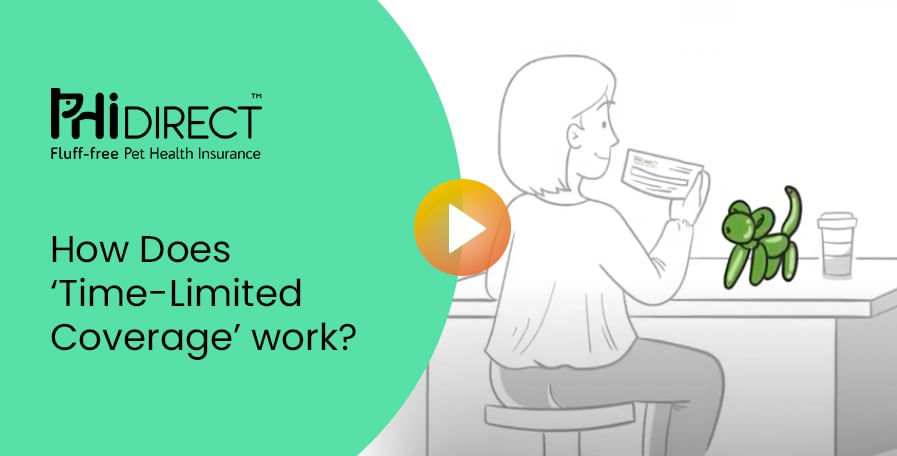
How Pet Insurance Works
You insure your car. You insure your health. But what about your pet?
Pet insurance is not new to North America and has been around for over 20 years(!) but surprisingly only 3% of Canadian pet owners have coverage for their pets. As pets become more and more a part of the family, it’s important to understand what pet insurance is, how it works, and why it’s the right fit for you and your pet.
Pet insurance typically reimburses a portion of your veterinary bills. The amount reimbursed varies depending on the plan you choose and what’s eligible for coverage. The super simple short of how pet insurance works is:
But, each provider is different so it's not quite that simple.
Now let's dig deeper into everything you need to know about how pet insurance works. Read on for pet guardians' ultimate guide on pet insurance.
Table of Contents
What is pet insurance and how does pet insurance work?
Ultimately, pet insurance is there for you when the kitty litter hits the fan.
We all hope that our pets are lucky and never have a big accident or illness, but, if something does happen, treatment can cost pet guardians thousands of dollars. Pet insurance is there for your pet for the unexpected accidents or illnesses your pet may experience in their lifetime.
When you enroll in pet insurance, coverage is simple:
- You visit the vet
Skippy has a limp, so you schedule an appointment and get an exam with your vet. - You pay at the time of checkout
Now that the exam’s complete, you’ll pay your bill at your veterinarian’s office. - Submit your claim for reimbursement
After reviewing your policy and understanding what’s covered and what’s not, you’ll submit a claim form and attach your invoice from your appointment for your pet’s eligible expenses. - You get paid back!
The Claims specialists will review your claim submission and reimburse you for your eligible expenses according to your plan’s coverage details (for instance, excluding any deductibles or co-insurance, or PHI Direct's New Condition Coverage).

Think of pet insurance like travel insurance. You book your flights and hotel, and you’re certain your trip is happening. You may not need it, but it’s there for you ‘just in case’ you need to cancel your vacation, giving you peace of mind.
.png?width=276&height=230&name=Rectangle%201%20(7).png) Why buy an extended warranty on your washing machine? Often, it’s so that if something breaks, you can stress less knowing you’re protected and don’t need to feel the financial burden of the unexpected expense.
Why buy an extended warranty on your washing machine? Often, it’s so that if something breaks, you can stress less knowing you’re protected and don’t need to feel the financial burden of the unexpected expense.
Similarly, you buy pet insurance because you want to transfer that unknown risk to someone else – in this case, the insurance company.
Pet guardians can reasonably budget for the expected costs of pet ownership – vaccines, annual exams, etc. – and, so, pet insurance is for the unexpected pet health expenses that may pop up over the course of a pet’s lifetime.
Pet insurance can help responsible pet guardians avoid making difficult decisions in emergencies. By paying a monthly fee, you ensure that you won't have to choose between your pet's health and financial stability.
Rather than viewing pet insurance solely as an investment, consider it as a way to secure peace of mind. While it's true that your pet may never require extensive medical care, having insurance means you're prepared if the unexpected does occur.
Pet insurance helps ensure that if your pet does require costly treatment, you'll have a better chance of being able to afford it.
It's all about safeguarding your furry friend's well-being and your own financial stability.

Let’s address the elephant – or the Mastiff – in the room. “Pet insurance is a scam.” We hear that A LOT. And we get it. When insurance doesn’t pay out, it’s understandable to think that it’s not legitimate and that the pet insurance company is just trying to make money.
But this is where it’s critical to understand the coverage and policy of any pet insurance plan you’re considering.
Oftentimes, claims get denied – and therefore people feel duped and think pet insurance is a scam – for four (4) main reasons:
For instance, PHI Direct has a 48-hour waiting period for accidents, 14-day waiting period for illnesses, and 60-day waiting period for cruciate ligament conditions.
In short (TLDR;), read the sample policy of any plan you’re considering to understand what’s covered with pet insurance and what’s not covered with pet insurance. Scams begone!
.png)
Pet Insurance FAQs
Who accepts pet insurance?
What are the different types of coverage?
Pet insurance coverage options vary between providers, and many plans bundle Accident and Illness together. There are many health issues covered under pet insurance but let’s dig into the different types of coverage.
Accident-only coverage: this type of coverage protects you against things like an ACL tear or broken toe. This type of coverage doesn’t cover illnesses such as diabetes or allergies.
Accident and Illness coverage: this is the most popular type of coverage. With Accident and Illness coverage, you’re protected for both injuries and illnesses. PHI Direct, for instance, provides coverage for accidents and new illnesses each year.
Wellness: Wellness is not insurance, as pet insurance is for unexpected pet health expenses. Wellness plans are often add-ons to insurance coverage and include things like wellness exams, vaccines, spaying and neutering, and other routine care. These Wellness plans often cost extra.
Regardless if you have accident-only or accident + illness coverage, surgery is often covered accordingly to the terms and conditions of your specific policy.
Does pet insurance cover pre-existing conditions?
What isn't covered with pet insurance?
No two policies are the same. With PHI Direct, there’s an added layer to our policy that helps us keep premiums 35% lower, on average, than other Canadian Pet Insurance providers (you can even see how much lower our premiums compare). This is our New Condition Coverage, where any condition experienced in one year becomes pre-existing the next.
When to get pet insurance?
However, with PHI Direct, the benefit is that no matter when you enroll, your pet’s premiums stay lower as they age thanks to our new condition coverage.
The right time to get pet insurance is when you’re ready to get pet insurance. You may want to consider is pet insurance worth it for a puppy or an indoor cat, or what might happen if you don’t insure your pet.
How much does pet insurance cost?
Pet insurance premiums vary based on a number of factors such as:
- Your pet’s age, breed, gender, or location
- What the plan covers
- Your annual policy limit
- Your deductible
- Accident coverage vs. Accident + Illness coverage, for instance
- Dental vs. no dental
All of these factors, plus more, go into determining your pet’s monthly premium cost. Oftentimes, it is more affordable to enroll your pet when they are younger as age is a factor in premium prices. However, with PHI Direct’s New Condition Coverage, premiums stay lower over the lifetime of a pet compared to other insurers.
Not PHI Direct.
PHI Direct is designed to put affordable pet insurance in pet guardians' hands for the ‘just in case.’ Like most pet insurance providers, you simply visit the vet and pay your bill, submit your invoice to us, and then get reimbursed for eligible claims.
Most providers’ monthly premiums are impacted by the claims made year-over-year by its members overall. PHI Direct's policy resets annually, preventing past claims from affecting premiums, and providing financial stability for pet owners. This allows us to be there for pet guardians for the big financial hits of initial diagnosis and treatment and for any new illnesses.
.jpg?width=1000&height=1333&name=Rebecca-Review%20(1).jpg)
.jpg?width=1000&height=1250&name=Samantha-Review%20(1).jpg)




.png)
